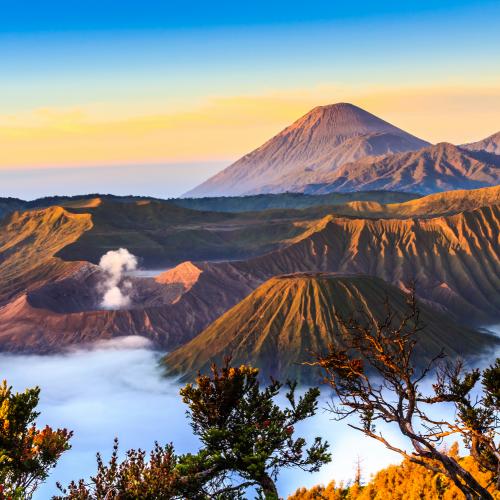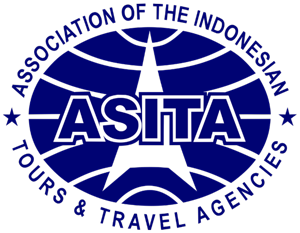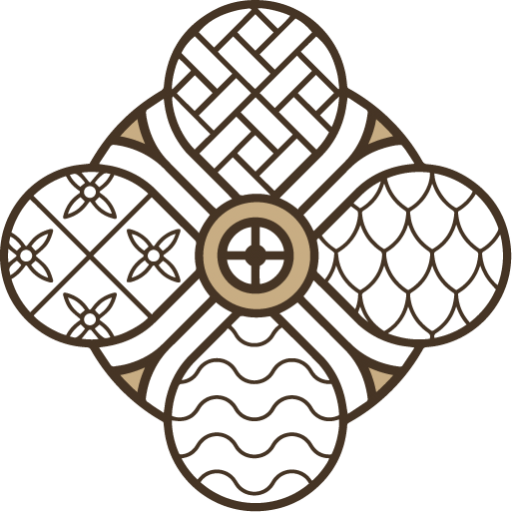Best things to do in Java Island

What are the best things to do in Java Island ? Wich are the must-visit places in Java ? Of course, and as usual in Indonesia, the answer is long...Java, the biggest island in Indonesia is filled with many things to do and visit such as temples, volcanic mountains, waterfalls and rainforests.
With a population of 147.7 million (Java mainland) or 151.8 million (including the inhabitants of its surrounding islands, principally Madura), Java constitutes 56.1 percent of the Indonesian population and is the world’s most-populous major island. The Indonesian capital city, Jakarta, is on its northwestern coast.
Java is one of the most beautiful islands of Indonesia. It is home to some of the most incredible volcanic landscapes in the world. Amzing nature, ancient temples, white-sand beaches, turquoise seas...don’t miss this article so you will know what Java Island can offert you from West to East.
UJUNG KULONG NATIONAL PARK
Ujung Kulon National Park is at the westernmost tip of Java, in Banten province of Indonesia. It includes the volcanic island group of Krakatoa in Lampung province, and other islands including Panaitan, as well as smaller offshore islets such as Handeuleum and Peucang in the Sunda Strait. The park encompasses an area of 1,206 km2 (466 sq mi) (of which 443 km2 (171 sq mi) is marine), most of which lies on a peninsula reaching into the Indian Ocean It is Indonesia’s first proposed national park and was declared a UNESCO World Heritage Site in 1991 for containing the largest remaining lowland rainforest in Java.
Parts of today’s national park and World Heritage site have been protected since the early 20th century. Krakatoa (or rather, the three islets which remain of it) was declared as a Nature Reserve in 1921, followed by Pulau Panaitan and Pulau Peucang Nature Reserve in 1937, the Ujung Kulon Nature Reserve in 1958, the Gunung Honje Nature Reserve in 1967, and most recently Ujung Kulon National Park in 1992. In 2005 the park was designated as an ASEAN Heritage Park.
Ujung Kulon is the last known refuge for the critically endangered Javan rhinoceros after poachers killed the last remaining rhino in Cát Tiên National Park of Vietnam, where a small population of 10 or less remained in 2010. The Javan Rhinos are known as the largest animals on Java and the second largest animals in Indonesia after the Asian Elephant. This extraordinary creature is extremely rare and barely makes its appearance noticeable. Some of the locals even regard the Javan rhino as more than a mere animal but almost like a near sacred ancient creature. Aside from the Javan Rhino, Ujung Kulon National Park is also home to many other special wildlife.
We only recommend you to visit Ujung Kulon National Park if you are an adventure traveller who loves nature and simplicity. You must be ready to spend some days in a beautiful area with no luxury, no good hotels, no restaurants...real adventure and deep immersion into nature.
There are two ways to enter Ujung Kulon National Park. By chartered boats from Carita Beach and overland by car via Labuan to Tamanjaya or Sumur. If you take the sea route, It is approximately 2-3 hours boat ride from Carita Beach to Peucang Island where the accommodation and national park representative office are situated.
If you take the overland route, from Jakarta you can head out to Serang, the capital of Banten via the Toll road for about 2 hours drive. From Serang, you continue westward to Labuan, in Pandeglang Regency for roughly about 2 hours. The little town of Labuan is where the main office of the Ujung Kulon National Park is located (Jalan Perintis Kemerdekaan No 51 ). From Labuan, the road continues to Panimbang, Sumur, and Tamanjaya for a little over another 2 hours
You will be able to do some trekking and also visit Krakatoa volcano if you want to. It can be dangerous. However, during calm phases, you can climb to the top of the crater. It takes a little less than 2 hours to reach the summit. So please, contact always a local travel agency specialzed in this area, like Sulawesi Adventures.
CENTRAL JAVA
Central Java .is a province of Indonesia, located in the middle of the island of Java. Its administrative capital is Semarang. It is bordered by West Java in the west, the Indian Ocean and the Special Region of Yogyakarta in the south, East Java in the east, and the Java Sea in the north. It has a total area of 32,800.69 km², with a population of 36,516,035 at the 2020 Census making it the third-most populous province in both Java and Indonesia after West Java and East Java. The province also includes the island of Nusakambangan in the south (close to the border of West Java), and the Karimun Jawa Islands in the Java Sea.
YOGJAKARTA
Yogyakarta, together with its twin city Surakarta (Solo), is the cradle of civilization on Java.This city is one of the foremost cultural centers of Indonesia. From strolling through the living museum of The Kraton or The Keraton (Sultan’s Palace), to hanging out at the famous Alun Alun, to watching silversmiths produce amazing jewelry at Kotagede and maybe try a splurge shopping up at Malioboro road.
MERAPI VOLCANO
Climb Majestic Mt. Merapi Volcano at the Center of Java can be a really good adventure experience in Indonesia. Mt Merapi, located near Yogyakarta, is one of the most active volcanoes on earth. This majestic, perfectly cone-shaped volcano, with its peak at 2,911 meters above sea level, is part of the lives of Javanese People. If you are very adventurous and you are fit, we recommend you to hike Gunung Merapi.
BOROBUDUR TEMPLE
The Borobudur Temple Compounds is one of the greatest Buddhist monuments in the world, and was built in the 8th and 9th centuries AD during the reign of the Syailendra Dynasty. The monument is located in the Kedu Valley, in the southern part of Central Java, at the centre of the island of Java, Indonesia. It was built in three tiers: a pyramidal base with five concentric square terraces, the trunk of a cone with three circular platforms and, at the top, a monumental stupa. The walls and balustrades are decorated with fine low reliefs, covering a total surface area of 2,500 m2. Around the circular platforms are 72 openwork stupas, each containing a statue of the Buddha. The monument was restored with UNESCO’s help in the 1970s.
To have even a better experience we recommend you to stay at Plataran Borobudur & Spa which is set against the backdrop of magnificent Borobudur Temple and the picturesque Menoreh Hills. or in Amanjiwo, that overlooks the Unesco World Heritage Site of Borobudur.
PRAMBANAN TEMPLES COMPOUNDS
Prambanan Temple Compounds consist of Prambanan Temple (also called Loro Jonggrang), Sewu Temple, Bubrah Temple and Lumbung Temple. Prambanan Temple itself is a complex consisting of 240 temples. All the mentioned temples form the Prambanan Archaeological Park and were built during the heyday of Sailendra’s powerful dynasty in Java in the 8th century AD. These compounds are located on the border between the two provinces of Yogyakarta and Central Java on Java Island.
While Loro Jonggrang, dating from the 9th century, is a brilliant example of Hindu religious bas-reliefs, Sewu, with its four pairs of Dwarapala giant statues, is Indonesia’s largest Buddhist complex including the temples of Lumbung, Bubrah and Asu (Gana temple). The Hindu temples are decorated with reliefs illustrating the Indonesian version of the Ramayana epic which are masterpieces of stone carvings. These are surrounded by hundreds of shrines that have been arranged in three parts showing high levels of stone building technology and architecture from the 8th century AD in Java. With over 500 temples, Prambanan Temple Compounds represents not only an architectural and cultural treasure, but also a standing proof of past religious peaceful cohabitation.
DIENG PLATEAU
Dieng Plateau is a marshy plateau that forms the floor of a caldera complex on the Dieng Volcanic Complex in Wonosobo and Banjarnegara. Referred to as "Dieng" by Indonesians, it sits at 2,000 metres (6,600 ft) above sea level, far from major population centres. The name "Dieng" comes from Di Hyang which means "Abode of the Gods.
The Plateau is the location of eight small Hindu temples from the Kalingga Kingdom. It is unclear when they were built, estimated to range from mid 7th century to end of 8th century AD; they are the oldest known standing stone structures in Java. They are originally thought to have numbered 400 but only eight remain. The temples are now believed to have been named after the heroes of the Hindu epic Mahabharata.
The place is a lesser-known tourist destination near Yogjakarta and itworths the effort: breathtaking sceneries, unique landscape and a nice Color Lake called Telaga Warna. Don’t miss it!
MOUNT BROMO SUNRISE
Mount Bromo is an active volcano crater located in East Java. Probably is the most famous volcano in Indonesia. It’s easy to reach the volcano, so you will find a lot of tourist (domestic and international). However, see the sunrise from Mount Bromo is once in a life time experience. It’s like if you are in another world, in another planet...the time just stops and you are witness of an amazing and unique spectacle.
MOUNT IJEN-BLUE FIRE CRATER
Kawah Ijen is most famous for its one of a kind blue fire and for being home to the world’s largest acid lake. You have two options to visit it. You start the visit at midnight so that you can see the blue fire. Or you can start at 03.00AM (sleep some more hours) and then hike the volcano. The hike is more challenging than the one from Bromo. It takes around 1H30.
Along the way, you will see many miners carrying heavy loads (between 75 and 90 kg!) all the way up to the crater. The blue fire derives from the mining activity and is ignited sulfuric gas, which emerges from cracks. It’s a hard work.
KARIMUNJAWA ARCHIPELAGO
Situated between Java and Borneo, and still unknown to mass tourism, Karimunjawa Archipelago is a National Marine Park composed of 27 islands which still offers the feeling of a natural and remote beauty. Ppristine white, unspoiled beaches fringed with palm trees, and the amazing colours of the sea is awaiting for you,
You can reach the archipelago by flight from Semarang or by ferry from Jepara. Flying time is only 40 minutes to the main Island, Karimunjawa. The ferry takes between 2 hours (fast ferry) up to 4 hours (slow ferry).
You will feel on paradise!
And we remain you that the best option to create a perfect tailor-made tour in Indonesia is to contact a local travel agency. It will be a pleasure for us to help you and together create the trip of your dreams.




 Suara Air, Lauxury Villa in Ubud, Bali
Suara Air, Lauxury Villa in Ubud, Bali Lia Beach, Togean Islands Resort, Sulawesi
Lia Beach, Togean Islands Resort, Sulawesi Santai Toraja Hotel, Rantepao, Sulawesi
Santai Toraja Hotel, Rantepao, Sulawesi Kelana, Boat Cruise at Komodo
Kelana, Boat Cruise at Komodo